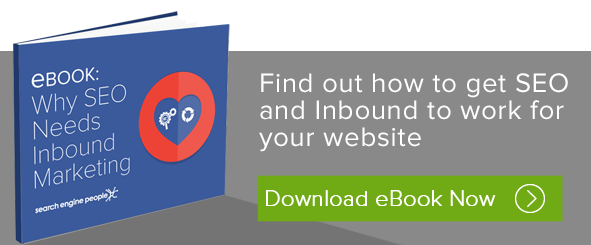
Image by Jeremy Brooks
If you've been able to get visitors to a landing page, so far, you're marketing effectively. They have visited a page, clicked through a call-to-action, and have been directed to your landing page. But, if they don't convert on your landing page, you've accomplished very little - you haven't obtained the critical prospect data that will help you market to them more effectively as they move through the buying process. In the Inbound Marketing methodology, capturing this data is crucial; it provides insight into where a prospect is in the buying cycle and what kind of content piques their interest, allowing you to serve them the most relevant, valuable content at the right time.
The fundamental purpose of landing pages is to convert visitors into leads. If your current landing pages aren't doing the trick, it's time to switch it up. Like web pages, PPC ads, and other Inbound Marketing tactics, the best way to improve the performance of your landing pages - ie. improve conversion rates - is to test them. Here are the top 5 landing page tests to perform that can significantly boost the effectiveness of your landing pages.
1. Headlines And Sub-headlines
Your headline is the meat and potatoes of your landing page. It is likely the first - maybe the only - copy that people will read on your landing page. Thus, it needs to be compelling, clearly explaining the offer and conveying value. Does the reader know what they are getting, without reading anything else on the page? If not, you're headline isn't serving its purpose. Test a couple of variations of the headline and the sub-headline and test which works best.
2. Copy
The copy of your landing page should demonstrate why the offer is valuable and important to the prospect. Where appropriate, take advantage of formatting to make the information easily consumable via bullets, numbered lists, bolded words, etc.
When testing copy, you want to be sure to try a couple of variations of your copy: remember, even simple fixes can significantly improve performance. Our landing page for our Free Inbound Marketing Consultation is a perfect example. By testing a variation of the original copy, we were able to increase our conversion rate by 7%. What did we do? Shortened the copy, added a bolded green subheading, and changed the bullet points. See below:
Copy: Landing Page A
Copy: Landing Page B
3. Form Field And Placement
The form is the aspect of your landing page where your visitors provide you their contact information. The fields of your form show be appropriate to the offer; this will depend on your objectives, and what prospect information you want to capture.
When testing, try variations in the placement and length of the form, as well as the form fields themselves. You may find that including fewer (or different) form fields or even placing the form in a different location will invite more conversions.
4. Form Title
Changing the title of your form is a very simple test, but it can significantly increase conversion rates. Like your headline, your form title should indicate what the visitor will get by filling out and submitting the form. Try different variations using actionable language, different lengths, or using different pronouns (for example: "Get your free tip sheet" vs. "Get my free tip sheet").
5. Button
There are many different features you can test when it comes to your landing page button. Popular choices include button copy, colour, placement, and directional cues such as arrows. For example, if your current CTA button says "Download now", try testing a variation that focuses more on what the visitor will get - ex: "Get your free tip sheet now" (Michael Aagaard of ContentVerve suggests changing verbs to "Get" where appropriate to increase conversions). Remember, the better you convey value, the higher your click-through rate will be.
Conclusion
Testing your landing pages is simply smart marketing. It doesn't have to be a time intensive process, yet the improvements in conversion rates that can result from testing variations can be significant. More conversions leads to better prospect intelligence, which consequently improves your ability to offer up relevant, effective marketing messages to your prospects throughout the buying process.



